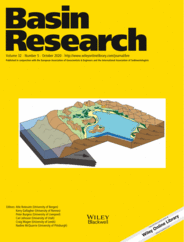
Full text loading...
 , Christopher L. Kirkland1
, Christopher L. Kirkland1
Understanding the development of sedimentary systems during continental rifting is important for tracking environmental change and lithospheric processes. Conceptual models have been developed for the sourcing, routing and facies architecture of sediments in rift‐settings, driven in part by quantitative sediment tracking. Here, we present laser ablation split‐stream detrital zircon U/Pb geochronology and Hf‐isotopes for post‐rift (Cretaceous‐Paleogene) clastic sediments from Ocean Drilling Program (ODP) wells and Plio‐Pleistocene palaeoshoreline material, from the southern margin of Australia. Provenance results are contextualized through comparison with well‐characterized source regions and regional pre‐ and syn‐rift sediment reservoirs to track changes associated with Australia‐Antarctica separation during East Gondwana break‐up. The provenance character of the post‐rift sediments studied are distinct from pre‐existing sediment reservoirs and demonstrate termination of previously stable sediment routing systems and a dominance of local basement of the Proterozoic Madura and Coompana provinces (~1.2 Ga and CHUR‐like Hf‐signatures; Moodini Supersuite) in offshore ODP wells. A composite post‐rift Cretaceous?‐Eocene sample in the easternmost well expresses characteristic Phanerozoic zircon age signatures associated with source regions in eastern Australia that are interpreted to reflect inversion in the Ceduna Sub‐basin to the east. Detrital zircon signatures in Plio‐Pleistocene palaeoshoreline sediment are also relatively distinct, indicating derivation from coastal erosion in the Leeuwin Complex (~0.5 and 0.7 Ga subchondritic grains) and Albany–Fraser Orogen (~1.2 Ga subchondritic grains) several hundred, to over a thousand kilometers to the west. Collectively, results highlight the fundamental geological processes associated with rifting that dramatically change the character of sediment provenance via (a) isolation of pre‐existing primary and secondary sources of detritus, (b) development of new source regions in basin compartmentalized highs and localized fault scarps, and (c) establishment of marine and coastal currents that redefine clastic sediment transport.
,Detrital zircon U/Pb age and Hf‐isotopes facilitate a robust understanding of sediment source to sink relationships on the southern margin of Australia. Provenance analysis tracks complete reorganisation of sediment systems associated with the rifting of Australia and Antarctica during Gondwana break‐up.

Article metrics loading...

Full text loading...
References


Data & Media loading...

